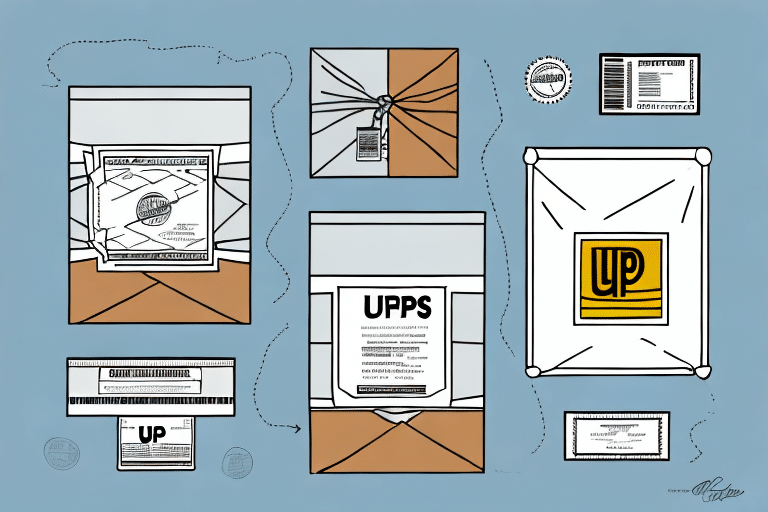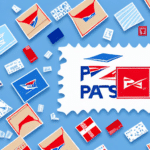Introduction: Selecting the Right Shipping Provider
In today’s fast-paced economy, reliable shipping and delivery services are indispensable for businesses and individuals alike. Whether you’re managing a small enterprise or sending a personal gift, choosing the right shipping provider can significantly impact your efficiency and customer satisfaction. The United States Postal Service (USPS) and United Parcel Service (UPS) are two of the most prominent shipping providers in the United States. This comprehensive comparison explores their service offerings, pricing structures, delivery reliability, tracking capabilities, packaging requirements, insurance options, and customer support to help you make an informed decision.
Understanding USPS and UPS: A Comprehensive Overview
History and Evolution of USPS
The United States Postal Service (USPS) is the oldest postal service in the country, established in 1775 with Benjamin Franklin as the first postmaster general. Today, USPS operates over 31,000 post offices, employs more than 633,000 employees, and delivers to over 160 million addresses nationwide. Despite facing financial challenges due to declining mail volume and increased competition from private carriers, USPS remains a vital service, especially in rural and underserved areas.
Recent efforts by USPS to modernize include the introduction of advanced tracking systems and investment in automated sorting facilities. According to the USPS Annual Report 2023, the organization continues to adapt to the changing logistics landscape, maintaining its commitment to affordable and reliable mail delivery.
History and Growth of UPS
Founded in 1907 as the American Messenger Company in Seattle, Washington, UPS has grown into a global logistics powerhouse operating in over 220 countries and territories. Renamed United Parcel Service in 1919, UPS has consistently focused on innovation and technology to enhance its service offerings. With a workforce of over 500,000 employees, UPS delivers millions of packages daily, leveraging a sophisticated logistics network and advanced tracking technologies.
UPS’s commitment to sustainability is evident in its investment in alternative fuel vehicles and carbon offset programs. According to UPS’s 2023 Sustainability Report, the company aims to achieve carbon neutrality by 2050, showcasing its dedication to environmental responsibility.
Service Offerings and Pricing Structures
USPS Service Options
USPS offers a variety of shipping services tailored to different needs:
- Priority Mail Express: Overnight delivery to most U.S. locations with a money-back guarantee.
- Priority Mail: 1-3 business days delivery with flat-rate and variable pricing options.
- First-Class Mail: Economical option for lightweight packages and letters.
- Media Mail: Cost-effective shipping for educational materials and media items.
- International Mail: Various international shipping options with delivery times ranging from 6-10 business days.
USPS pricing is generally more affordable for small to medium-sized packages, making it ideal for individual senders and small businesses. Additionally, USPS offers flat-rate boxes, simplifying the shipping cost based on box size rather than weight or distance.
UPS Service Options
UPS provides a wide array of shipping services to meet diverse logistical needs:
- UPS Ground: Reliable and cost-effective delivery within 1-5 business days in the U.S.
- UPS Next Day Air: Guaranteed overnight delivery by the next business day.
- UPS 2nd Day Air: Delivery within two business days.
- UPS 3 Day Select: Delivery within three business days.
- UPS Worldwide Express: Expedited international shipping with delivery times typically between 1-3 business days.
UPS’s pricing tends to be higher than USPS, particularly for expedited and international services. However, UPS offers customized pricing models for businesses, providing flexibility and potential cost savings through negotiated rates.
Comparing Pricing: USPS vs. UPS
When comparing shipping costs, USPS generally offers lower rates for smaller, lighter packages and domestic shipments. For example, USPS First-Class Mail starts at just $0.58 for lightweight packages, whereas UPS Ground rates start higher based on package weight and distance.
Businesses shipping in bulk or requiring specialized services may find UPS’s bulk pricing and advanced logistics more cost-effective despite the higher base rates. Utilizing UPS’s technology integration, businesses can optimize their shipping processes and potentially reduce overall costs.
For detailed rate comparisons, both USPS and UPS provide online pricing calculators:
Delivery Performance and Reliability
USPS Delivery Times and Reliability
USPS offers various delivery speed options, with Priority Mail Express guaranteeing overnight delivery to most U.S. locations. Priority Mail typically delivers within 1-3 business days, while First-Class Mail ranges from 1-5 business days depending on the destination.
According to the USPS Performance Data, roughly 95% of Priority Mail packages are delivered on time. However, USPS can experience delays during peak seasons, such as holidays, and in remote areas where logistics challenges are greater.
UPS Delivery Times and Reliability
UPS is renowned for its dependable delivery times, particularly with its expedited services. UPS Next Day Air and UPS 2nd Day Air boast on-time delivery rates exceeding 99%, making them preferred choices for time-sensitive shipments.
UPS’s extensive logistics network and advanced tracking systems contribute to its high reliability. The company's investment in infrastructure and technology ensures consistent performance, even during high-demand periods.
According to industry reports, UPS maintains a 97.5% on-time delivery rate, significantly higher than many competitors, highlighting its reputation for reliability.
Tracking Capabilities and Technological Advancements
USPS Tracking Features
USPS provides basic tracking services for most of its shipping options. Customers can monitor their package’s progress online or through the USPS mobile app. However, tracking updates may not be as frequent or detailed compared to private carriers.
Features include:
- Basic tracking status updates.
- Delivery notifications via email or SMS.
- Estimated delivery dates for Priority Mail and Priority Mail Express.
While suitable for general use, USPS’s tracking may fall short for businesses requiring real-time updates and detailed package monitoring.
UPS Advanced Tracking Solutions
UPS offers comprehensive tracking capabilities through its UPS Tracking system and the UPS My Choice program. Features include:
- Real-time package location updates.
- Estimated delivery time windows.
- Delivery confirmation and proof of delivery.
- Package rerouting and delivery rescheduling options.
- Mobile app integration for on-the-go tracking.
These advanced tracking features provide businesses with greater visibility and control over their shipments, enhancing customer satisfaction and operational efficiency.
According to UPS, their tracking system reduces lost packages by providing detailed shipment information and proactive notifications, contributing to their high reliability rates.
Packaging Requirements and Insurance Options
USPS Packaging Guidelines
USPS offers free Priority Mail shipping supplies, including flat-rate boxes and envelopes, which simplify the packaging process. Customers must adhere to size and weight restrictions:
- Maximum length: 108 inches (combined length and girth).
- Maximum weight: 70 pounds.
Proper packaging ensures safe and efficient delivery, reducing the risk of damage or delays.
UPS Packaging Guidelines
UPS provides a range of packaging options, including standardized boxes and envelopes. While UPS does not offer free packaging for all services, it provides detailed packing guidelines to ensure package integrity:
- Maximum weight: 150 pounds.
- Maximum combined length and girth: 165 inches.
- Use of sturdy, double-walled boxes for heavy or fragile items.
Adhering to these guidelines helps prevent shipment damage and ensures compliance with UPS’s shipping standards.
Insurance and Declared Value: Protecting Your Shipments
USPS Insurance Options
USPS offers limited insurance coverage based on the chosen service:
- Priority Mail: Up to $50 insurance included.
- Priority Mail Express: Up to $100 insurance included.
Additional coverage can be purchased for high-value items, providing protection up to $5,000 for an extra fee.
UPS Insurance Options
UPS provides comprehensive insurance coverage through its Declared Value service:
- Included coverage: $100 for most services.
- Additional coverage: Up to $50,000 available for a fee, suitable for high-value shipments.
UPS’s extensive insurance options offer greater protection for valuable and fragile items, making it a preferable choice for businesses handling high-value goods.
Customer Support and Assistance
USPS Customer Service
USPS offers customer support through multiple channels:
- Phone Support: Available Monday through Friday with limited weekend hours.
- Online Resources: Comprehensive FAQ section and support forms on the USPS website.
- Local Post Offices: In-person assistance available at all USPS locations.
While USPS provides essential support services, customers may experience longer wait times and limited availability during peak periods.
UPS Customer Service
UPS is known for its robust customer support infrastructure:
- 24/7 Phone Support: Accessible around the clock for urgent inquiries.
- Online Chat and Email: Real-time assistance through the UPS website and mobile app.
- UPS Community Forums: Peer support and expert advice available online.
- Chatbot Services: Automated assistance for common queries and tracking information.
UPS’s comprehensive customer service offerings ensure prompt and effective resolution of issues, enhancing overall customer satisfaction.
Conclusion: Making the Right Choice for Your Shipping Needs
Choosing between USPS and UPS depends on various factors, including your specific shipping requirements, budget constraints, package size and weight, delivery speed, tracking needs, and the level of customer support desired.
USPS is ideal for individuals and small businesses seeking affordable shipping options for lightweight and standard packages, particularly for domestic shipments. Its flat-rate pricing and extensive network make it a cost-effective choice for routine deliveries.
UPS, on the other hand, is better suited for businesses and individuals requiring reliable, expedited, and international shipping services. Its advanced tracking capabilities, comprehensive insurance options, and superior customer service cater to more complex logistical needs.
Ultimately, the best shipping provider for you will align with your unique needs, ensuring reliable delivery, cost-effectiveness, and excellent customer support.
Bonus Tip: Leveraging Third-Party Shipping Solutions
To optimize your shipping process and reduce costs, consider utilizing third-party shipping solutions that integrate with USPS and UPS services. These platforms often offer discounted rates, consolidated shipping options, and advanced analytics to streamline your logistics operations.
Services such as ShipStation, Stamps.com, and Etsy Shipping API provide comprehensive tools to manage shipments efficiently, offering features like automated label printing, multi-carrier integration, and detailed reporting.
By leveraging these third-party providers, businesses can enhance their shipping efficiency, achieve better rate negotiations, and improve overall customer satisfaction.






















